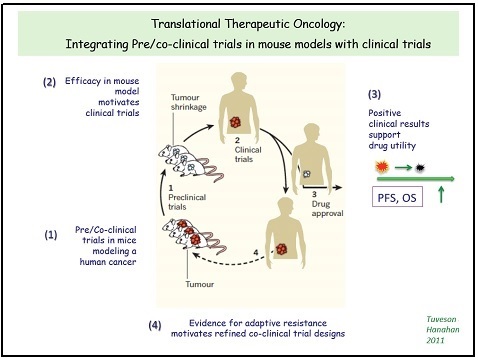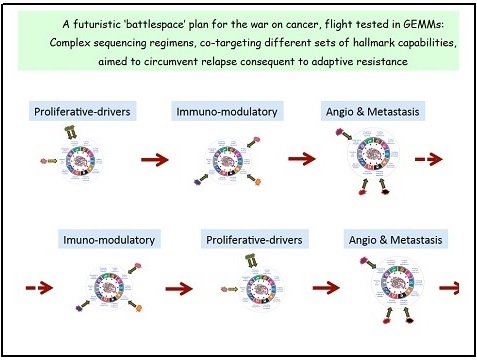The prototypical RIP1-Tag2 mouse model of PanNET has served as a discovery engine for mechanisms of multistage tumor development and progression, including that of the “angiogenic switch”, which is triggered during early neoplastic stages and is instrumental for tumor formation and growth. This model has also served to illustrate the potential of assessing targeted therapies via preclinical trials in GEMMs, whereby the results can incentivize clinical trials. One case study involves the angiogenic kinase inhibitor sunitinib, which proved efficacious in preclinical trials in the RIP1-Tag2 model, eliciting tumor shrinkage and survival benefit, results that motivated clinical trials in PanNET patients that led to its approval for treating patients with this cancer type. The Hanahan lab is currently investigating a number of hallmark-targeting therapeutic strategies, in most of the aforementioned cancer models, with the goal to incentivize and guide the design of clinical trials with promise to improve treatment outcomes. The concept is illustrated below (top).


One fascinating research direction involves elucidating adaptive resistance mechanisms – acquired and intrinsic – to hallmark targeting therapies. The game plan is to identify such mechanisms, and then circumvent them pharmacologically, directly or indirectly. In regard to the latter, we are testing the hypothesis (Hanahan & Weinberg, 2011; Hanahan, 2013) that multi-targeting distinct hallmarks may pose a significant challenge to the evolution of drug resistance, requiring simultaneous adaptations to multiple therapy-impaired hallmarks, thereby improving the duration of treatment response. On can envision, in a future where incipient resistance can be detected early, a war plan involving multi-pronged sequential attacks, as outlined conceptually above (bottom). The Hanahan lab is flight-testing mechanism-targeted drugs aimed at adaptive resistance as well as hallmark co-targeting strategies, in models of pancreas cancer, melanoma, glioblastoma, and cervical cancer.